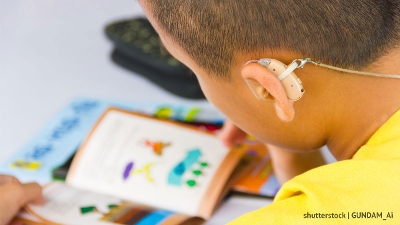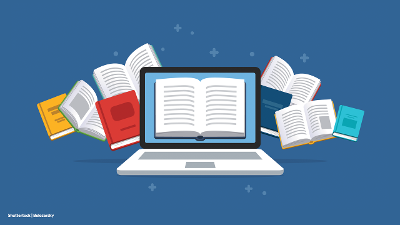Showing results 1-10 of 24 for text to speech
Search results
-
Article
R. Jackson, 2021
In ASR, both the rate of information pick up and the portion of attention paid to braille or print—in combination with speech—can be controlled by the user.With sufficient practice, both braille readers and magnified print readers can greatly increase the rate at which they move through text using ASR.
-
Presentation

4:30PM – 5:30PM ET on Thursday, January 30, 2020
Experience the latest technologies for making math accessible to diverse learners. Math is its own language, and the ability to perceive and process the information in math content can be a barrier that prevents some learners from pursuing careers in math and related STEM fields. In this session, you will explore tools that provide multiple representations of math text, including text to speech supports and sonification.
-
Find answers to your questions about selecting formats based on a learner’s need, Checkpoint 3 of the process for selecting accessible formats.
-

Learn how to use the many options built into web browsers and e-readers to customize the presentation of information for a variety of learner needs and preferences.
-
Get to know the definition of accessible formats in copyright law that helps guide the decision-making process for providing usable formats to learners who need them.
-
Presentation
1:15PM – 2:05PM ET on Saturday, December 2, 2023
This session explores four myths about literacy learning: 1) Some children with disabilities do not need to learn to read and write; 2) Using speech to communicate is a prerequisite to reading and writing; 3) Children cannot have an intellectual disability and a reading disability; and 4) Using assistive technology (AT) to read and write is cheating.
-
Article
AEM Center at CAST, 2024
This publication examines the transformative potential of artificial intelligence (AI) in improving accessibility for individuals with disabilities, addressing challenges in mobility, communication, and education.
-
Presentation

9:20AM – 10:20AM ET on Thursday, January 30, 2020
Learn how to make self-created K-12 and higher ed STEM curriculum materials - including documents, graphics, and videos - accessible to all learners. The four accessible design principles of POUR will be applied to STEM-related course content through a series of material makeover demonstrations. Common examples of materials created by K-12 and higher ed STEM faculty will be first displayed in traditional formats, followed by POUR-aligned accessible versions. Skills covered in this session will include best practices for writing alt text and descriptions for technical images, charts, and graphics; creating closed captions and audio descriptions for video; the application of MathML in documents and websites to make mathematical and scientific notation accessible; and tools for making coding and basic computer science concepts accessible for all learners.
-
Presentation
2:00PM – 1:00PM ET on Friday, July 14, 2023
This session explains why and how AT and AEM can be and should be a natural part of how children develop literacy. We'll also hear stories about young learners facing barriers to reading and writing. What do their stories tell us about what we need next as educators?
-

Learn about the benefits of EPUB and how to create your own accessible publications using this flexible format.
